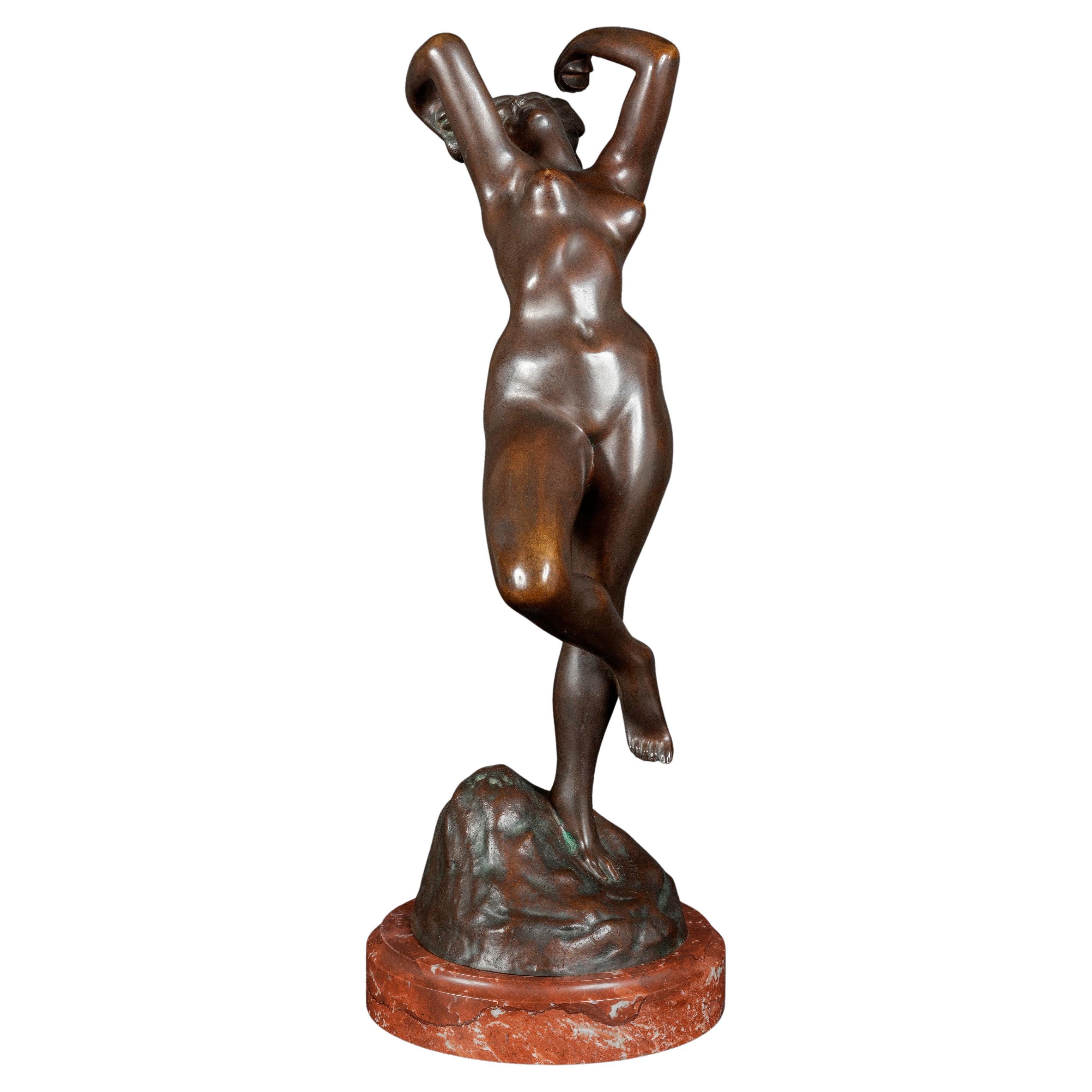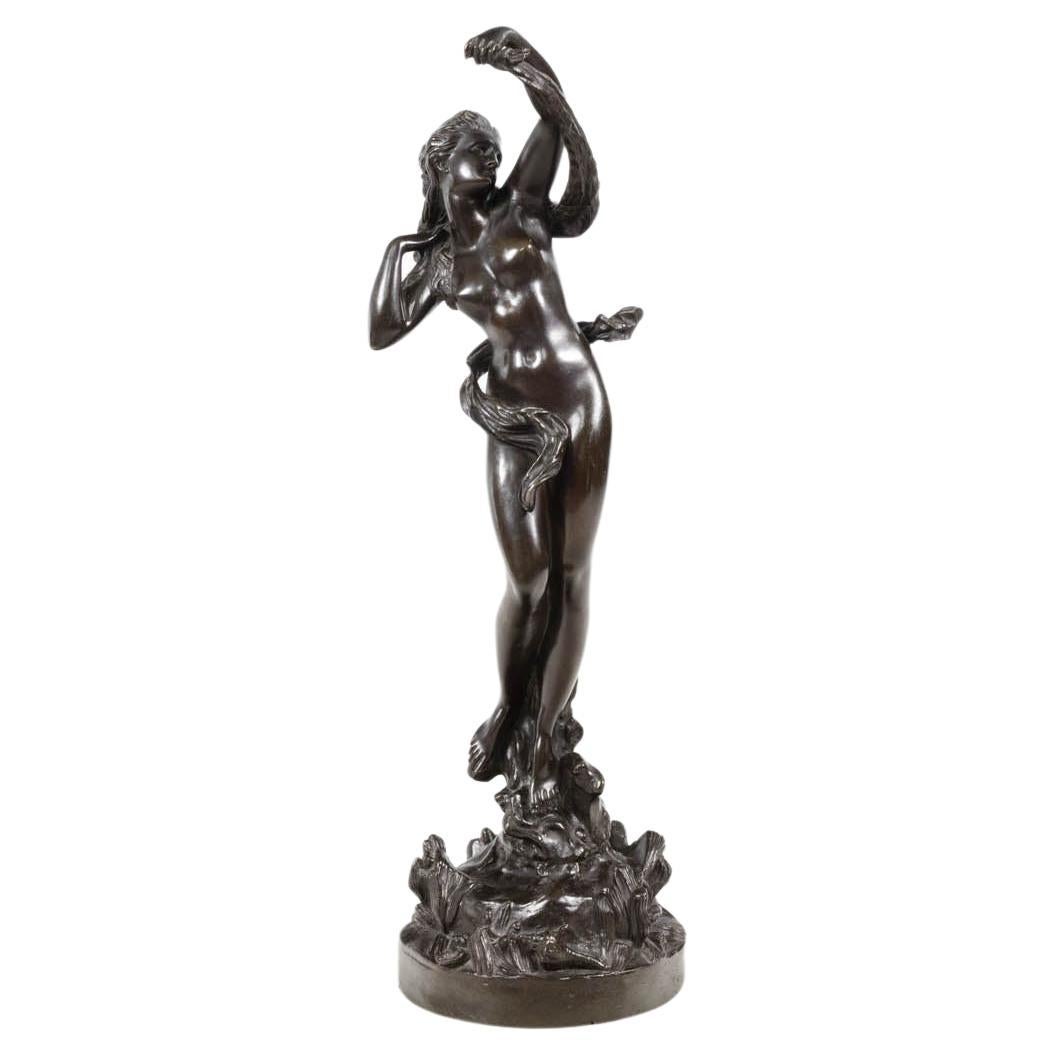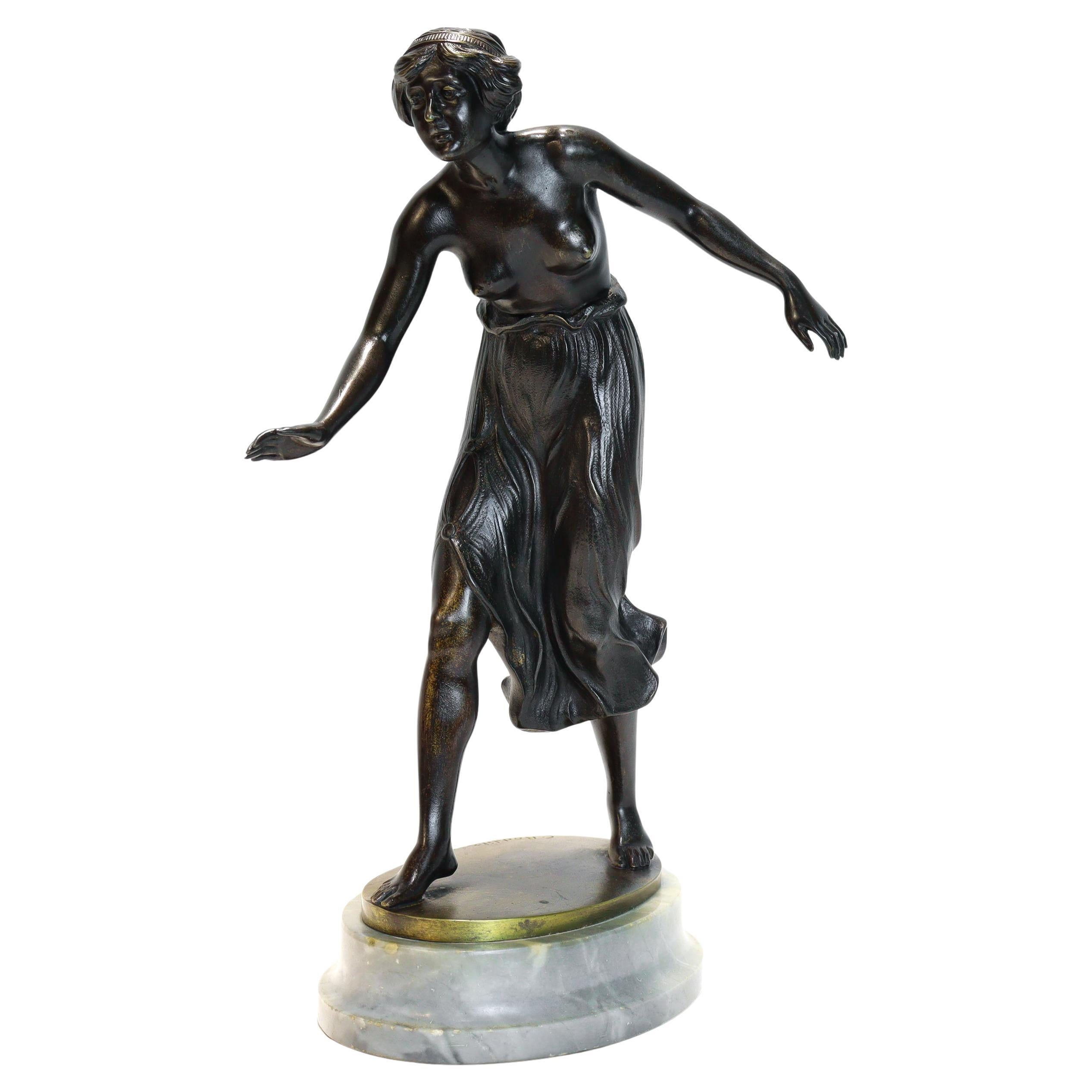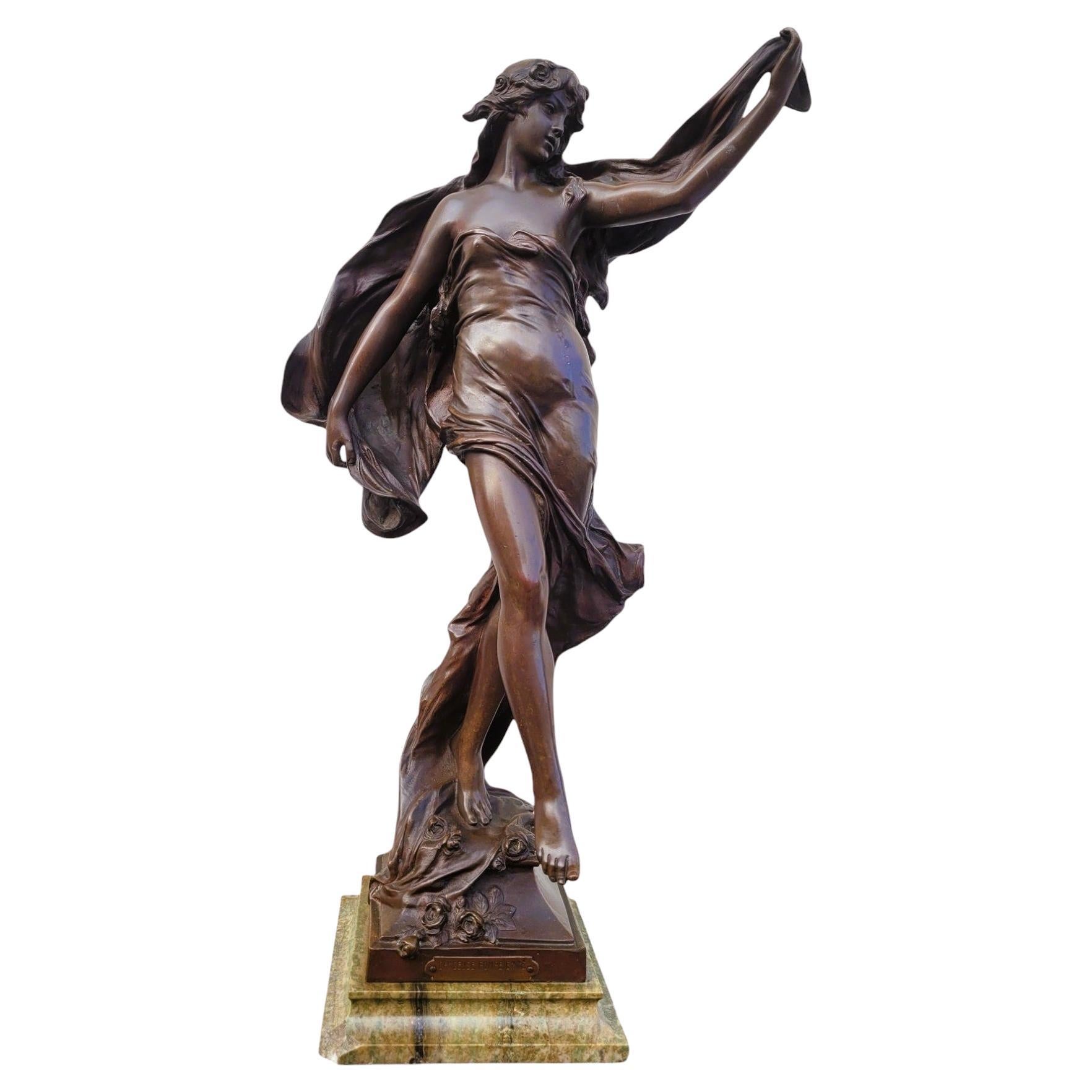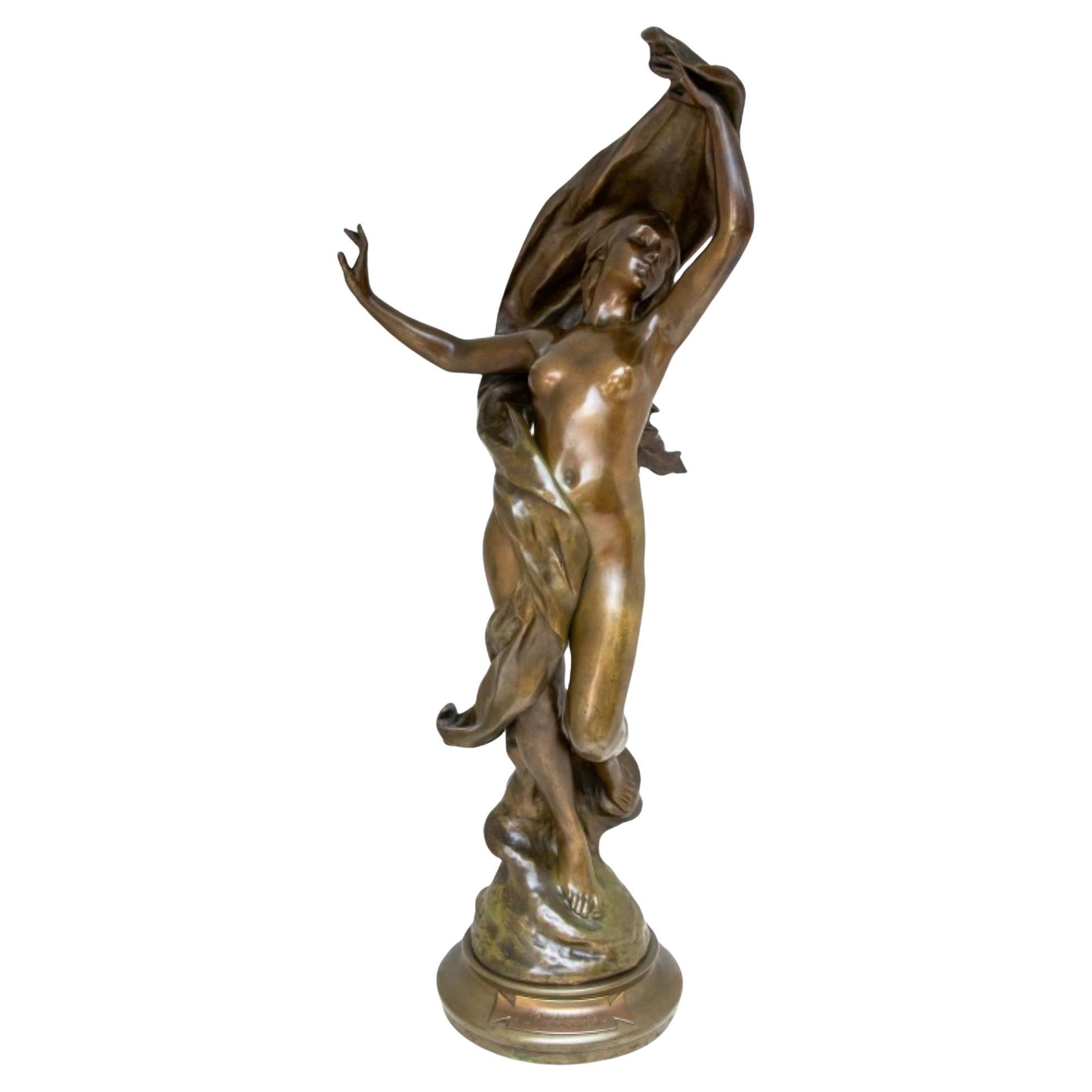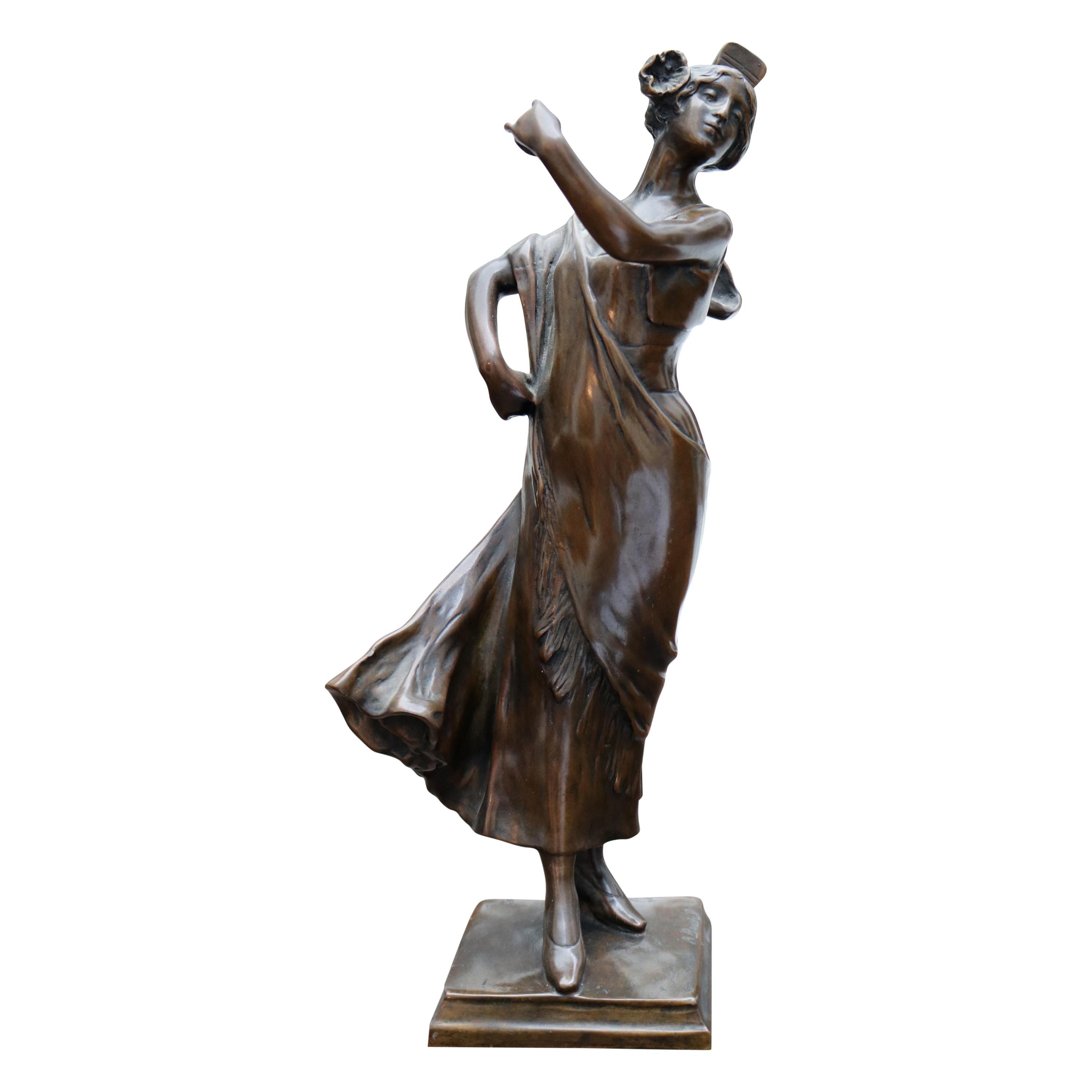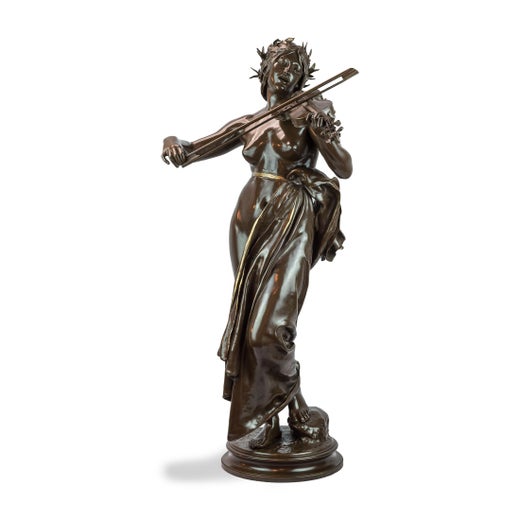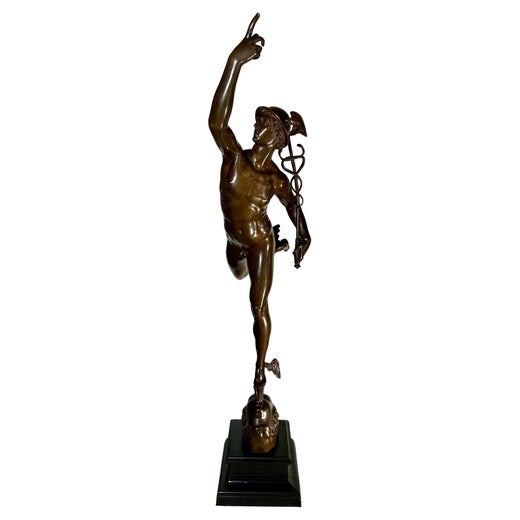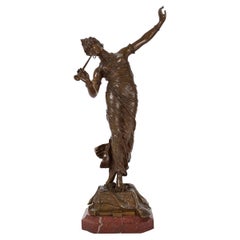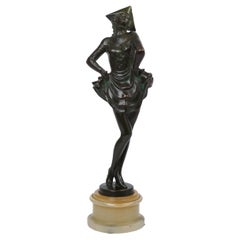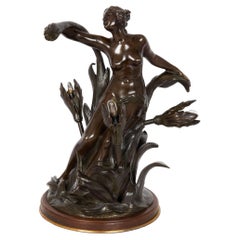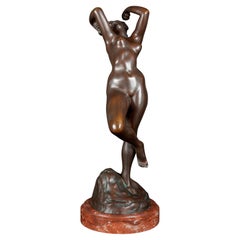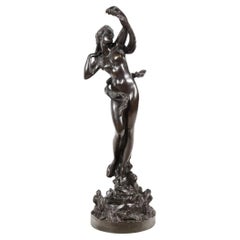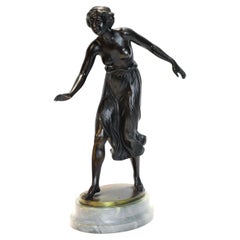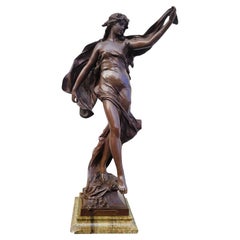Antique Art Nouveau Bronze Sculpture of "La Danse" by Eugene Delaplanche
About the Item
- Creator:F. Barbedienne Foundry (Maker),Eugène Delaplanche (Sculptor)
- Dimensions:Height: 29.38 in (74.63 cm)Width: 9.25 in (23.5 cm)Depth: 8 in (20.32 cm)
- Style:Art Nouveau (Of the Period)
- Materials and Techniques:
- Place of Origin:
- Period:
- Date of Manufacture:1910
- Condition:See condition notes in description text.
- Seller Location:Shippensburg, PA
- Reference Number:Seller: 212LKS08A1stDibs: LU1059033084982
Eugène Delaplanche
Eugène Delaplanche was a French sculptor born in Belleville (Seine). He was a pupil of Francisque Joseph Duret. Delaplanche gained the Prix de Rome in 1864 (spending 1864-67 at the Villa Medici in Rome) and the medal of honor in 1878. His Messenger of Love (1874), Aurora (1878) and the Virgin of the Lillies (1884) are in Luxembourg. Other works by him are Music (1878, Paris Opera House), called his masterpiece; Eve After the Fall (1869); Maternal Instruction (1875, Square of Sainte-Clothilde, Paris). He is also noted for his decorations in relief on vases of Haviland Faience. His best work is naturalistic but at the same time dignified and simple inline, and shows sound mastery of technique. He is represented by 15 works in the Glyptothek, Copenhagen and many other French museums and churches.
F. Barbedienne Foundry
Founded by one-time Parisian wallpaper dealer Ferdinand Barbedienne and engineer Achille Collas, one of the most revered foundries in 19th-century France began with the invention of a revolutionary 1830s-era device that could produce proportional reproductions — large or small — of sculptures. Collas’s machine, which yielded miniature likenesses of antiquities for the interiors of homes the world over, was pivotal to the success of the F. Barbedienne Foundry. The successful firm earned prestigious awards and critical acclaim and created exquisite bronze candleholders, clocks and lamps for a range of wealthy and prominent clients.
The duo first launched their company under the name Société Collas et Barbedienne, and early on, they optimized chemical processes for pigmenting and patinating their bronze statuettes. After Collas died in 1859, Barbedienne forged on alone, and the company’s name changed to simply F. Barbedienne.
Barbedienne employed more than 300 workers at that point, and the Maison created a range of furnishings and decorative objects that featured the integration of marble and ormolu accents. However, with the onset of the Franco-Prussian War of 1870, the foundry was forced to retrofit its molds, and the production of cannons replaced sculptures, furniture and vases.
When Ferdinand Barbedienne passed away in 1891, his nephew and heir, Gustave Leblanc, took over as president, changing the name to Leblanc-Barbedienne. Leblanc expanded production into Germany, the United Kingdom and the United States, carrying on the company's legacy with monumental sculptures, and models and securing production rights for famous statues. Paul-Alexandre Dumas, an Art Nouveau maker and student of Louis Majorelle, succeeded Leblanc until the company's closing in 1952.
Barbedienne pieces had been exhibited regularly in the 19th century and were especially prevalent at Europe’s international expositions and world’s fairs, where they received numerous awards. Today, the Musée d’Orsay in Paris holds dozens of Barbedienne works in its collection, including intricate mirrors, vases and cups created by Louis-Constant Sévin at the foundry. For more than two decades, Sévin created lamps, boxes and more at Maison Barbedienne. Working alongside award-winning chaser Désiré Attarge, Sévin designed Napoleon III-era works that greatly appealed to European nobility.
Other notable artists who collaborated with Barbedienne included Eugene Aizelin, Emmanuel Fremiet, Antonin Mercié, Emile Guillemin, Edouard Lievre, Ferdinand Levillain and Auguste Rodin.
On 1stDibs, find a collection of Barbedienne decorative objects, lighting and collectibles.
- ShippingRetrieving quote...Shipping from: Shippensburg, PA
- Return Policy
More From This Seller
View All20th Century German Art Nouveau Figurative Sculptures
Bronze
20th Century Austrian Art Deco Figurative Sculptures
Bronze
Antique 19th Century French Romantic Figurative Sculptures
Bronze
20th Century French Art Nouveau Table Lamps
Bronze
Antique 19th Century French Romantic Figurative Sculptures
Marble, Bronze
Antique 19th Century French Romantic Figurative Sculptures
Bronze
You May Also Like
Antique 19th Century Belgian Art Nouveau Figurative Sculptures
Bronze
Antique 19th Century French Neoclassical Figurative Sculptures
Bronze
20th Century German Art Deco Figurative Sculptures
Bronze
Antique Late 19th Century French Art Nouveau Figurative Sculptures
Bronze
Early 20th Century French Art Nouveau Figurative Sculptures
Bronze
Antique Late 19th Century French Figurative Sculptures
Bronze
